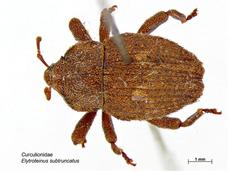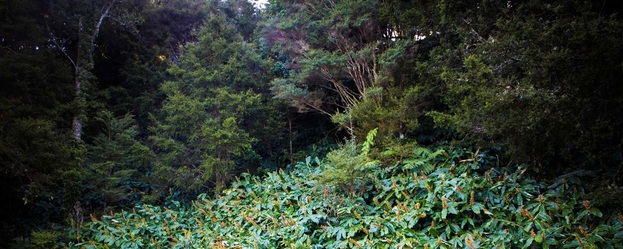
The wild ginger plant (Hedychium gardnerianum) also known as kahili ginger or ginger lily has been described as one of the greatest threats to our whenua; likened to a forest fire – it destroys everything. It is said to be one the world’s top 100 worst invasive species.
The wild ginger we have in New Zealand is a hybrid of Kahili ginger and white ginger, and was first introduced in the 1860’s as a garden plant because of its colourful flowers and fragrant scent. This pest plant loves the warm, wet Northland climate and with a lack of native predators, this plant has now taken a strong foothold over our forests and whenua.
This pest plant forms deep dense beds, making it all the more difficult to dig up. The stems have no branches and are erect, growing up to 2 metres tall with large, green, shiny alternate lance shaped leaves. Flower heads are 25-45cm tall with lemon-yellow flowers and red stamens during autumn.
The wild ginger plant is a problem in New Zealand because it is shade tolerant, long-lived and hardy, as well as being fast growing. The density of the plant blocks light and smothers native plants, whilst spreading rapidly, thus taking over a forest floor in a very short time frame. Often the plant grows so dense that it becomes almost impenetrable making native seedling germination almost impossible and degrading the habitat for ground dwelling birds such as the kiwi. Wild ginger produces around 100 seeds per flower head every year!
As the forest canopy begins to die, ginger is the only plant usually remaining – and this is already very evident around many of Northland’s forests and coastlines, and is now a direct threat to our native kauri forests.

Clive Stone, Kaitiaki and Manager of the Ngātiwai Trust Board Resource Management Unit (RMU) says, “From an Iwi perspective our major concern is with the state of the ginger growth over the past 30 years and how easily and quickly it spreads. Because most of it grows beneath the canopy of the surrounding bush, it has grown unnoticed at such a rapid rate that it has spread throughout some of the major forests within our rohe. We believe that if it is left unchecked, it will eventually take-over and destroy our native ngahere (forests) which, in turn will further threaten the survival of the other native wildlife species within these areas.”
Small patches of ginger can be controlled manually or with herbicides containing metsulfiron-methyl, however is only possible in small patches. Studies have shown that the success rate of eradication is significantly reduced with larger ginger patches. A lot of ginger patches are found in dense bush or forestry areas, so the use of herbicides is not possible as it can move through the soil and affect other native plants.

Dane Karepu, Kaitiaki and assistant manager of the Ngātiwai Trust Board RMU says, “More investment needs to be made into different methods to control wild ginger. Overseas studies have shown that the most effective tool to beat this dangerous pest is the use of a biological control agent. This is something that is introduced and is a known natural predator of ginger. The idea is that it would reduce the wild ginger population down to a manageable level.”
This weevil attacks all parts of the plant with larvae which causes damage to the plants roots. This beetle feeds on all species of ginger, including the hybrid species found in New Zealand.
New Zealand has a 90 year history of working with biocontrol agents. In the late 1980’s and 1990’s the ragwort flea beetle was widely distributed and is responsible for the decline of ragwort in New Zealand, which was once a common sight in Northland.
More recently biocontrol agents have been released in New Zealand to combat the woolly nightshade, Chinese privet and Japanese honeysuckle. Biocontrol’s are a safe and effective management tool – with around 550 agents released worldwide against 224 weed species, with only 8 instances of non-target attack and 7 of those being predicted.
Clive and Dane have been working closely with Northland Regional Council, Far North, Kaipara and Whangarei District Councils, Department of Conservation, Landcare Research, Hancock Forest Management and Summit Forests to investigate biocontrol options.
A new website is currently being established (www.stopwildginger.co.nz) to raise awareness of the ginger infestation and just how devastating this plant can be in Northland. An interactive map has been developed on the website which has detailed information of the main ginger problems and also allows you to submit your details and relevant sites where you know ginger is a problem.
Clive says, “We hope that with raised awareness of this issue, increased funding for better research and smarter technologies to control it, that together as a region, as kaitiaki of our rohe we can get on top of what is probably the single biggest threat to our ngahere and coastline. If you know of any large ginger outbreaks in your area, I urge you to log this information into the online mapping tool on the new website that has been established or feel free to contact me directly at the Ngātiwai Trust Board.”
The new website – www.stopwildginger.co.nz, is due to go live in the next two weeks.



